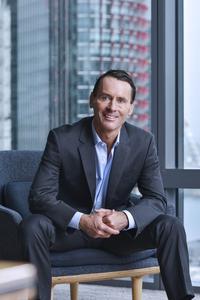CIO50 2020 #12 Craig Bright, Westpac Group

Craig Bright, former chief information officer with Westpac Group, understands that customer expectations these days are ultimately set by the big tech giants and that efficiency is defined by how organisations use technology, and most of all ‘data’.
“These themes require us to simultaneously deliver an exceptional customer experience, engaging customers in real-time in a way that’s personalised, intelligent and autonomous, with benchmark efficiency and seamless support,” he tells CIO Australia.
Bright and the team set themselves the goal to break out by innovating across customer engagement core platforms, infrastructure and operations.
One of the first forays was looking into how IBM’s Watson artificial intelligence technology might be applied to help improve customer service.
This spawned ‘Red’, Westpac’s first online virtual assistant, which is designed to take what a customer asks in chat, understand, and then reply to help with their question.
Then came the next addition to Westpac’s digital family, ‘Wendy’. Wendy is Australia’s first digital job coach, which extended some of the AI capabilities of Red with an overlay of digital avatar technology to emulate a more human style of interaction.
Wendy can handle hundreds of questions such as those relating to first-time employment, like 'how to write a resume?' or applying for a tax file number.
Both Red and Wendy support a more natural and intuitive style of engagement and are examples of how Westpac is using conversational artificial intelligence and avatars to offer customers greater choice in how they interact with the bank.
“Data is about using complex event processing, cloud and machine learning to influence how we guide, service and protect customers based on our knowledge of them and their actions across each of our channels,” Bright says.
In November 2019, he and the team launched the Data Driven Experience Platform (DDEP), a data hub that is the foundation of the bank’s real time data analytics.Built in partnership with Microsoft, it draws on data sources from across the Westpac Group to provide real-time, personalised insights on customers.
Progressive modernisation
“Our approach to our core platforms has been progressive modernisation: simply meaning we’re progressively establishing and migrating to platforms that provide us with the capability needed, balancing time-to-value with the cost of integrating new and old systems,” Bright says.
This is further illustrated by other core IT projects including Westpac’s Customer Service Hub (CSH), the Panorama advisor platform and NPP for payments processing.
But the success of Westpac’s digital initiatives is in no small way reliant on the bank’s ability to monitor and maintain them.
“Being more digital demands a higher standard of on-line service performance – with customers expecting continuous availability and quick response,” Bright says.
This has driven development of real-time telemetry to understand at a granular level customer experience and the performance of underlying application and infrastructure services.
“Using this real-time data and machine learning we’re able to rapidly triage and resolve problems and increasingly implement self-healing. Through operational innovation of this type and other advances in our capability and maturity we’ve improved service for our customers by nearly 65 percent over the past 12-month period.”
And thanks to the prior – and ongoing – commitment to digital workplace technologies like Office 365, Teams and OneConference, Westpac was able to ramp up work-from-home capabilities for 22,000 staff in just a few weeks, while end user experience monitoring is employed to bolster well-being and overall productivity.
Westpac is also undertaking a major upgrade of its Australian branches, with more than 300 now connected via SD-WAN technologies, resulting in significant performance improvements.
“Execution of this scope of change against a backdrop of nimble FinTech competitors is a formidable challenge that’s tested our ability to execute simply and efficiently,” Bright tells.
“It has forced us to reset the standard of capability, to challenge dated and inefficient processes and foster a performance culture. It’s a work in progress and critically important since we know we’ll be differentiated not by our strategy, but our ability to execute.”
Better, faster, cheaper
Bright believes achieving genuine influence within a large and complex organisation is the product of having a compelling strategy, the credibility to execute and the interpersonal skills required to navigate diverse personalities and points of view. On that basis, strategy, he says, is key.
“However, organisations are rarely differentiated by their strategy and what’s important is the CIO’s ability to execute, better, faster and cheaper than others.”
“Having the credibility to execute is therefore essential to influence. Or put differently, getting the basics right buys you the right and freedom to influence strategy.”
For example, it’s important for leaders to demonstrate things like prudent and diligent management of risk and financials, as well as consistently high standards of operational performance, and effective execution of change.
“With the right strategy and the credibility to execute, influence is then about communication,” Bright reflects.
“Being able to abstract sometimes complex technical concepts into illustrations and language that create a compelling case for change among those less-versed in technology is critical for the CIO to shape and influence the strategic agenda of their organisation.”
As reported by CIO in May 2020, Bright announced his departure from Westpac after being in the top tech job for almost two years. He is currently Group CIO at Barclays, based in London.